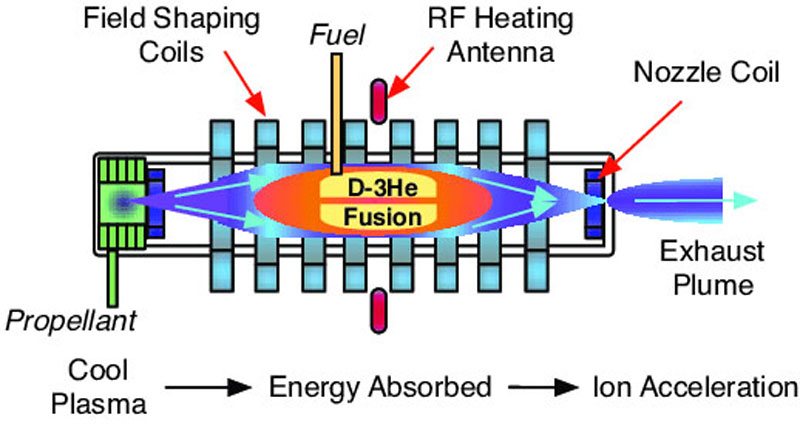The British company Pulsar Fusion has signed a partnership agreement with the American company Princeton Satellite Systems to create a thermonuclear rocket engine and a rocket that can reach Mars in 30 days. The main tool in the work will be artificial intelligence, which will study the physics of plasma in the engine and help optimize its design.
British Pulsar Fusion is known for its passion for “green” technologies – it is developing a rocket engine powered by plastic waste. But the company’s second goal was to create a thermonuclear rocket engine. In general, this is also a “green” direction in rocket engineering and energy in general. But with Princeton Satellite Systems, the British will try to develop American designs, not their own. Specifically, they will analyze plasma physics at the Princeton field inverted configuration version 2 (PFRC-2) facility.
The PFRC facility was proposed at the Princeton Plasma Physics Laboratory in the early 2000s. It applies the idea of reverse magnetic configuration. The high-pressure thermonuclear plasma is held inside the engine by means of a magnetic trap, and cold fuel in the form of the same plasma (ions and electrons) flows around the hot core and is saturated with its energy, then ejected. tremendous speed through electromagnetic nozzles.
For over 20 years, Princeton Satellite Systems has specialized in a range of government grants, including funding from NASA. In the future, it is planned to create units PFRC-3 and PFRC-4 by 2025. Second, it should get a synthesis reaction, and then a flying prototype creation process will be started. After all, they will be created based on joint research with Pulsar Fusion.
“We believe fusion engines will be demonstrated in space decades before we use fusion to generate energy on Earth,” he is confident. Richard Dinan (Richard Dinan), Founder and CEO of Pulsar Fusion.
The minibus-sized thermonuclear engine developed by the companies will be able to accelerate the 10-ton spacecraft to 500 thousand miles per hour or 223.5 km/h. At this rate, you can reach Mars in about three days or Titan (Saturn’s moon) in two months at its closest approach to Earth. However, this is the maximum speed and it also takes time to accelerate and decelerate.
The thermonuclear power plant will also be able to generate electricity for onboard systems, and working fuel can be taken from dust, gas and almost any substance in space. Small volumes of helium-3 and deuterium that do not take up much space will be needed to initiate and maintain a thermonuclear reaction in the engine.














